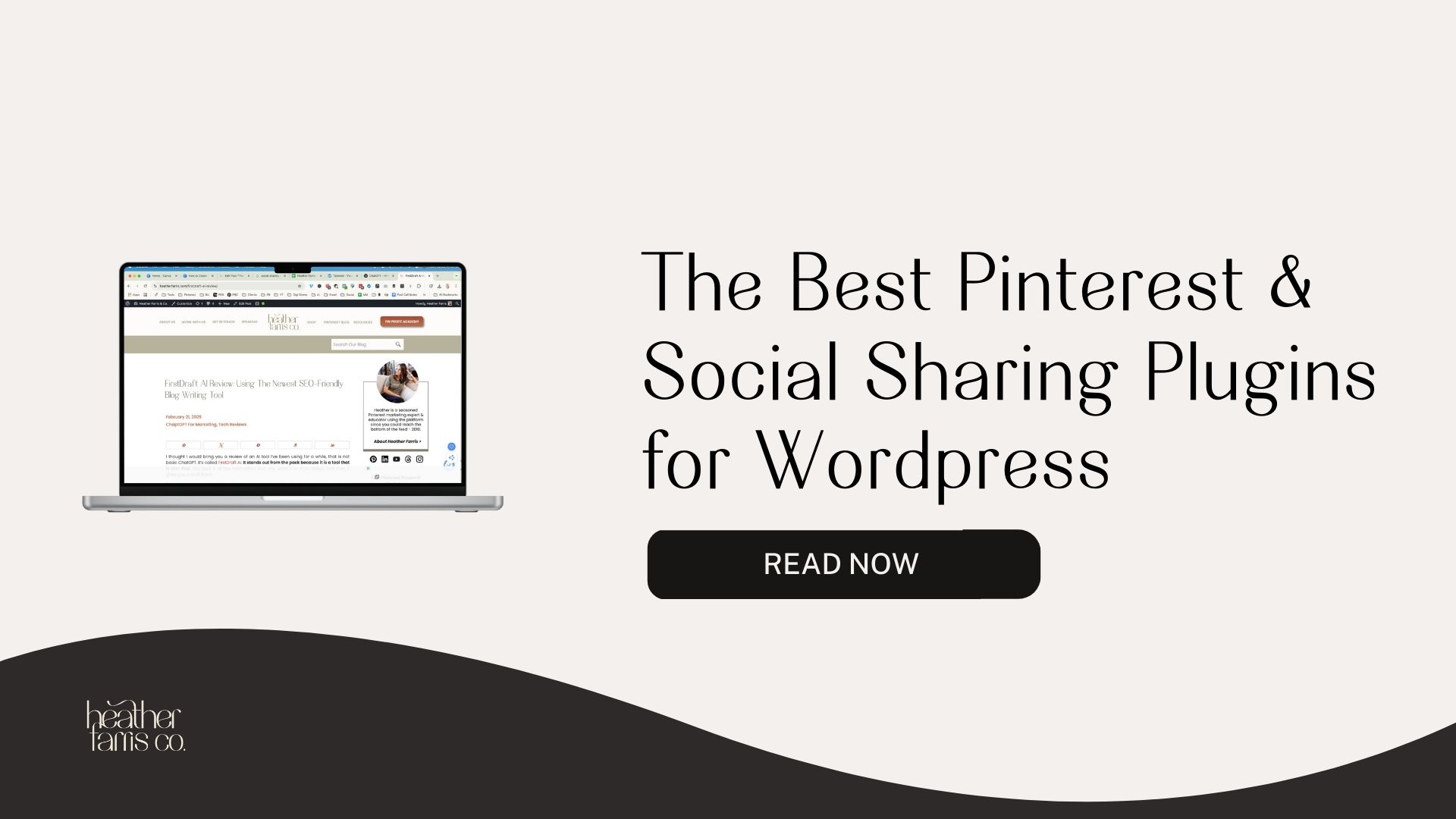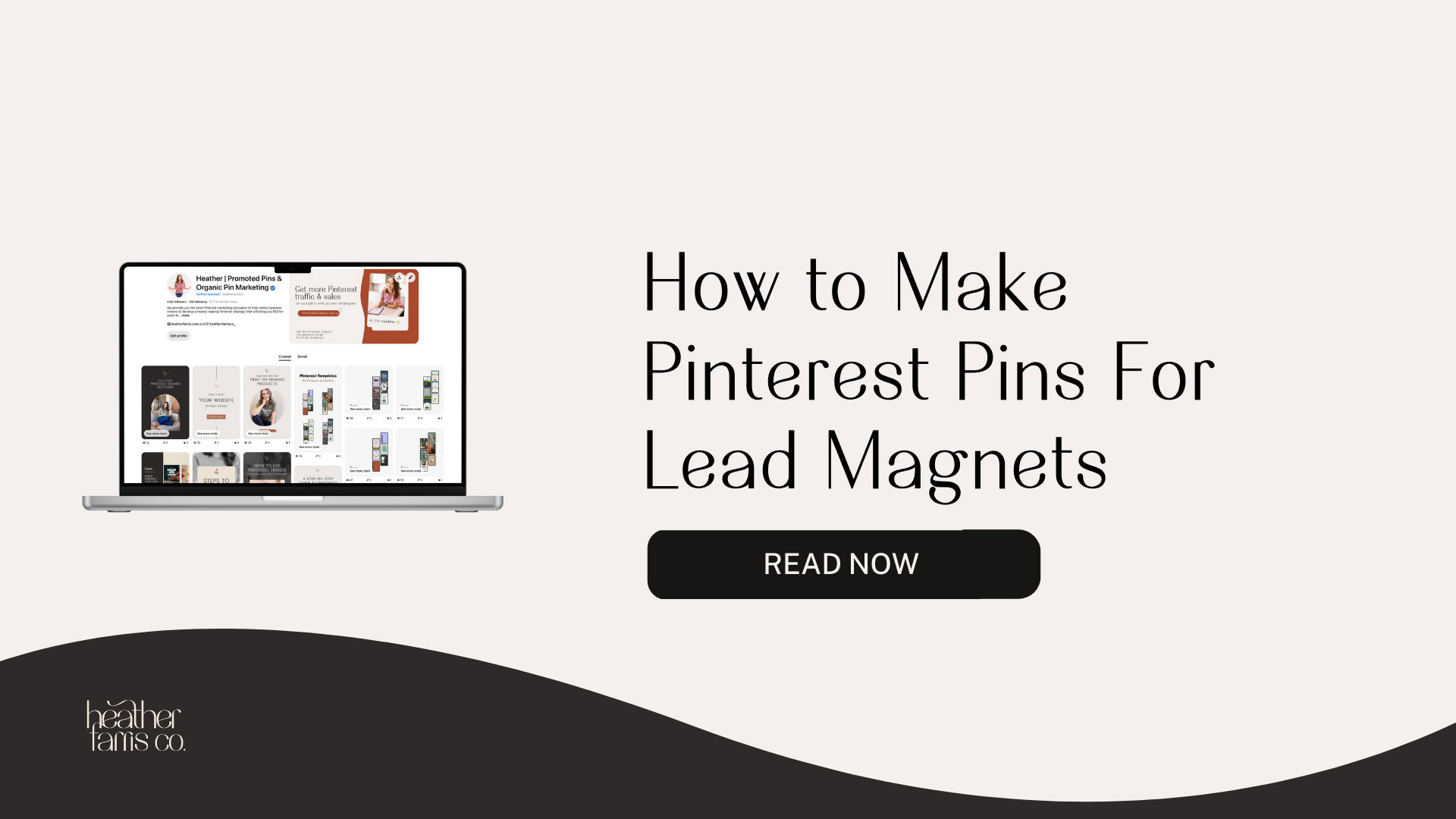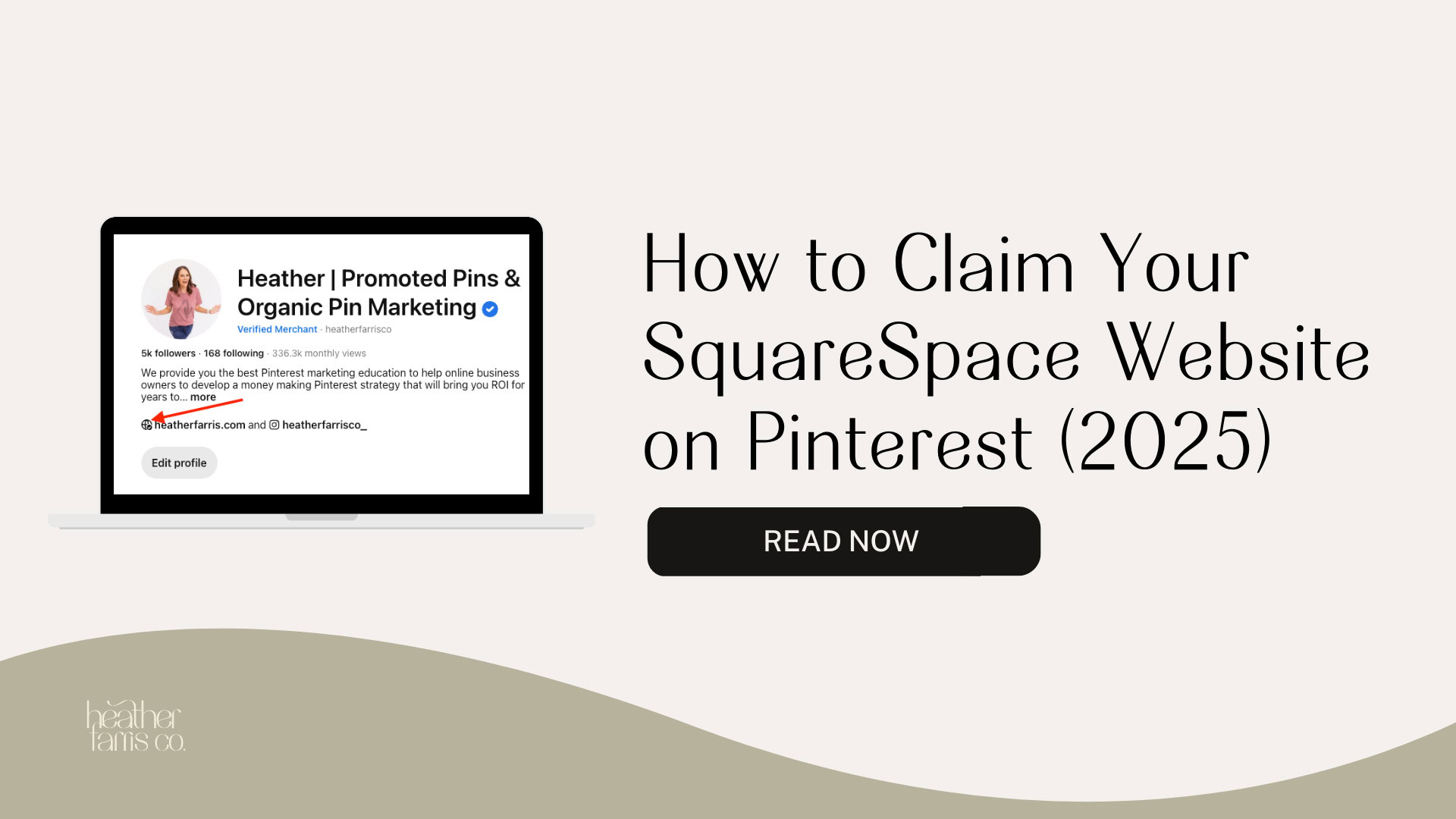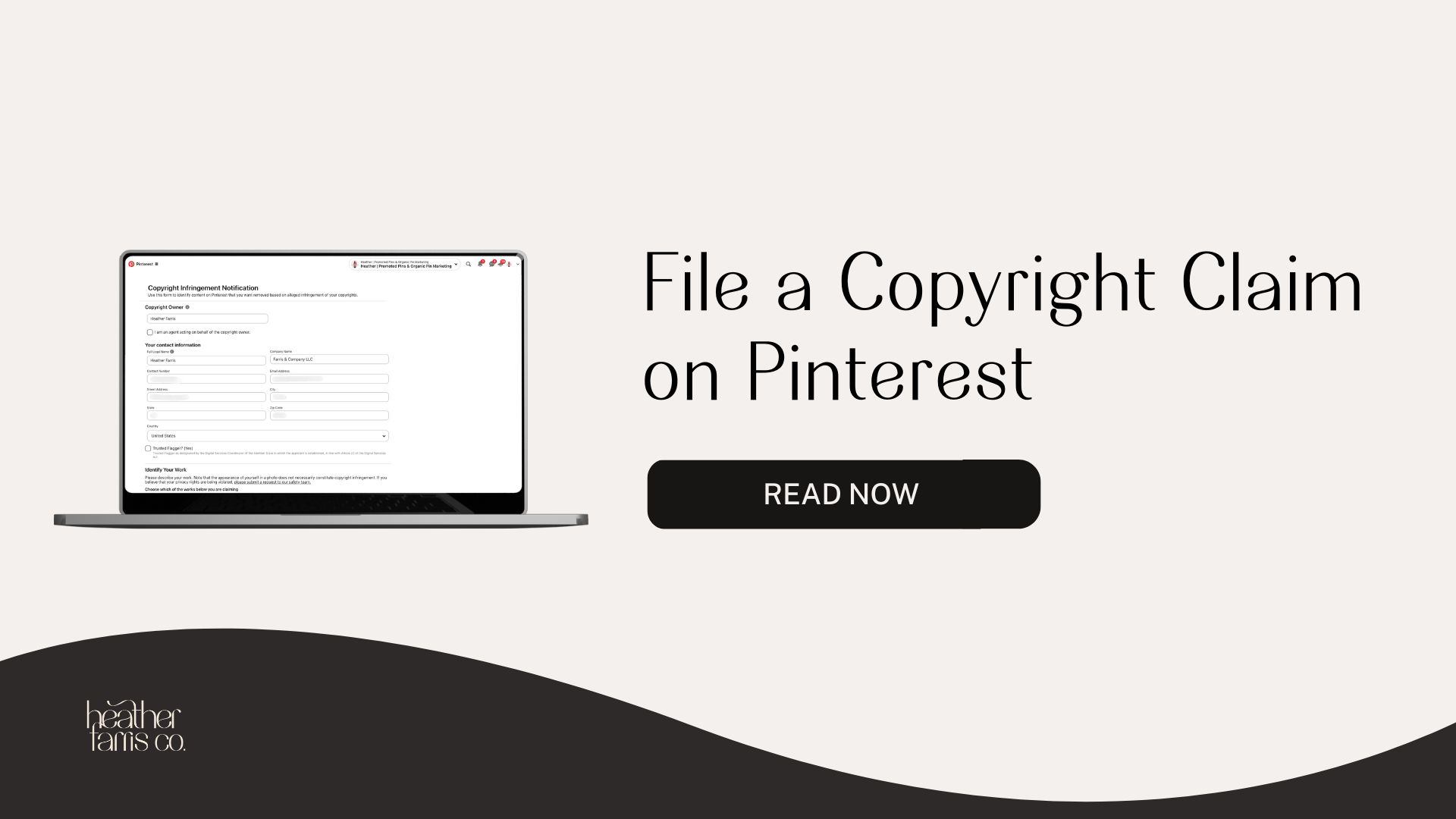Heather is a seasoned
Pinterest marketing expert & educator using the platform since you could reach the bottom of the feed - 2010.
About Heather Farris >
Can You Make Money on Pinterest? Here Are 6 Proven Methods to Monetize
February 16, 2023
Pinterest Creator Rewards shut down recently, and I don’t want you to fret because there are so many ways to monetize on and off Pinterest. Today we are going to dive into six different ways that you can make money on Pinterest, even without the Creator Rewards Program.
Hi, I’m Heather Farris, and I run a Pinterest marketing channel, an agency, and a paid membership community all about Pinterest and content strategy. So I am definitely one of the people you can trust when it comes to teaching you the ways of Pinterest.
How to Make Money on Pinterest
There are a handful of ways to monetize with Pinterest for content creators like myself and e-commerce shops. If you are reading this and have an e-commerce store like WooCommerce, BigCommerce, or Shopify, don’t worry because I will not leave you out.
RELATED: The Ultimate Pinterest Traffic Strategy for Bloggers & E-Commerce Shops
1. Pinterest Creator Fund
The first way you can monetize on Pinterest is through the Creator Fund. The Creator Fund is by application only, and it is a cohort-based program where they give you a grant as part of the program to use for content, equipment, and getting people hired for the team. A portion of the grant is also to pay you for your time.
Now that is one way that you can monetize on Pinterest. But most people will not be able to get inside the Creator Fund because it is typically application-only, and they usually accept underrepresented groups on Pinterest. The latest cohort to go through the creator fund is a food cohort. So, these are food creators that are creating food content.
2. Affiliate marketing
The next way you can monetize is available to anyone, including e-commerce shops, and this is affiliate marketing. You can link affiliate links on Pinterest in a couple of different ways.
The first is how we have always been able to do it: simply create standard pins or video pins and put your link on them when you create them in the pin builder.
The second way to use affiliate links on Pinterest is through idea pin stickers. You can utilize those stickers with pre-approved affiliate programs like Rakuten, Rewards Style, and Amazon and monetize your Idea pins with affiliate links.
If you want to learn more about affiliate marketing on Pinterest, check out our playlist here.
RELATED: How to Tag Products in Pinterest Idea Pins (2 Ways): How to Make MORE Money on Pinterest
3. Partnerships
The next way many people monetize on Pinterest these days is through partnerships. You might think of partnerships as sponsored content on your website, but it is not quite the same. Partnership on Pinterest means a brand partner is paying you to create content on this platform.
Historically, sponsorships have been where brands will pay you to create content on your website. However, brand partnerships are a great way to monetize on Pinterest.
I will link an excellent blog post here that was written by two friends. One of them is an acquaintance, and one is a good friend. You probably have heard of her if you have been in my audience, and that is Jana from Jana O. Media. You can read about brand partnerships on Pinterest in her blog.
4. Selling your products
You can monetize on Pinterest by selling your own products. You can do this through digital or physical products. If you have been here for a while, you know I do a lot of digital product sales through my shop.
You can also do this through physical products. For those of you who are e-commerce store owners, if you have a catalog, you can ingest that into Pinterest, have it show up on this shop surface, and monetize your Pinterest account this way. We have a lot of clients on our roster who make quite a lot of money from their e-commerce shop on Pinterest.
Like affiliate links, you can monetize those product links in several ways.
- through video and standard pins.
- with the catalog
- using Idea pins and using those product stickers to link your products on your Idea pins
Caveat: I should have mentioned this during the affiliate marketing section, but I forgot, so I’m mentioning it now. You can only do product stickers on mobile.
Just remember you can link both physical and digital products, including Etsy and Teacherspayteachers, on Pinterest. So don’t fret, and make sure you’re linking those products. People are ready to read, but not everyone is ready to buy immediately.
You should be promoting your products on Pinterest, including:
- landing pages
- sales pages
- funnel pages
- higher ticket programs
RELATED: How to Sell Digital Products in Your Business
5. Sell sponsored content
Much like brand partnerships, you can also sell sponsorships on your own website, where you create sponsored content.
For example, I’m filming on a Canon camera right now. If I wanted to reach out to Cannon and say, hey, will you sponsor a blog post on my website? I will charge you $5000 and write a 5000-word blog post. I will also create Instagram, TikTok, and Pinterest content to follow up on this blog post.
Let’s say they agreed to do that. I would then create that content on my website and include a sponsorship call out on that post, like “This post is sponsored by…” etc.
Like in brand partnerships, you would be judged based on views, traffic, clicks, etc. So, this is another way that you can monetize. Then what you would do with Pinterest is drive traffic to that content.
RELATED: Why You Need a Content Strategy Before You Ever Begin Marketing
6. Display ads
Display ads are probably my least favorite way of monetization because you are judged and paid out based on how many eyeballs saw your ads. So it’s a CPM model, much like YouTube Adsense. You’re paid out for every 1,000 views.
It’s not a lot of money. Some creators do make quite a lot of money from their display ads. The creators who are making a full-time income from display ads are the ones that get millions of page views. I want to encourage you to research it yourself and see if it would be a good fit.
RELATED: 19 Million Views on Pinterest: What Experts Are Not Telling You
Final thoughts
Just remember every income stream matters. You shouldn’t judge one income stream simply because it’s lower than all the rest. Ultimately, if you’re making money on it and it’s not costing you more to produce content for that income stream, I would say it’s probably worth checking out.
So, monetizing with Pinterest isn’t much different than monetizing with other platforms. So don’t worry too much about which strategy to choose right now. I would just research them and see which is a good fit for you.
At this point, you may be wondering how to craft your own full Pinterest Strategy. Well, I would encourage you to download my free Pinterest Strategy Guide. This will help you walk through the five pillars of your Pinterest strategy and all the things you need to do to craft your own.

It includes workflows and a resource list of the most important videos you should watch in relation to each pillar of Pinterest. I’ve thought of it all. I’ve put it all together for you in one downloadable guide. Head on over and grab that.
Now, if you want to accelerate your own Pinterest growth, I would encourage you to head over here and watch this video about what I wish every Pinterest account owner would do. I will see you next week.
Pin it for later

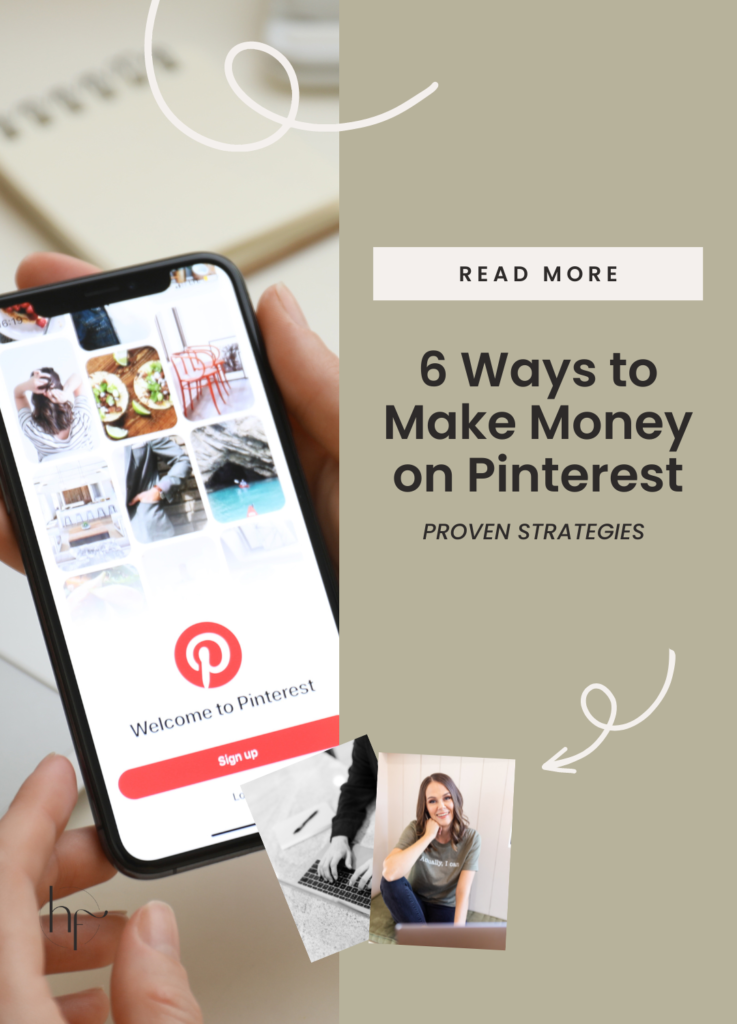
Heather Farris went to school for accounting and worked for years in banking and finance. After finding all of that entirely too boring she started her first blog in her basement in August of 2016. She has started 3 blogs in the marketing, motherhood and travel niches and used Pinterest to grow them all. She quickly became the go-to Pinterest strategist in her peer circles and has been implementing strategies, driving traffic and sales through organic and paid tactics for her clients. On this blog and her YouTube channel, as a renowned Pinterest marketing expert, she educates the public about clear and transparent marketing strategies to help them to grow on Pinterest and in other places online as a renowned Pinterest marketing expert.


